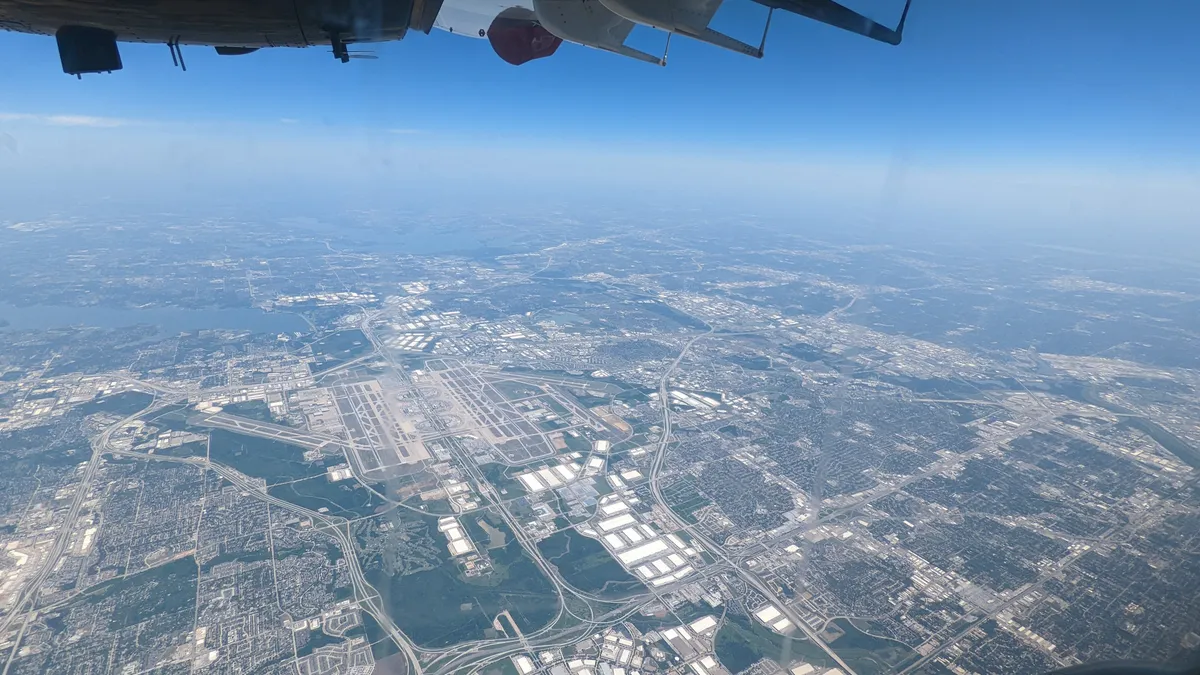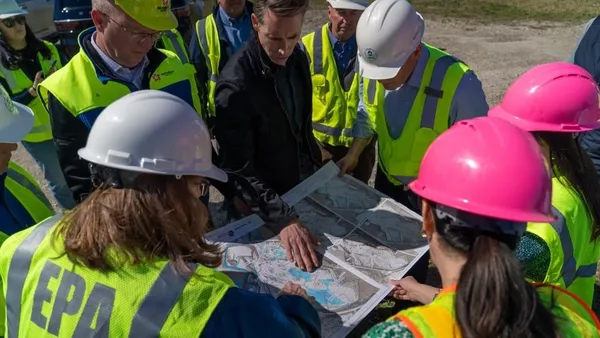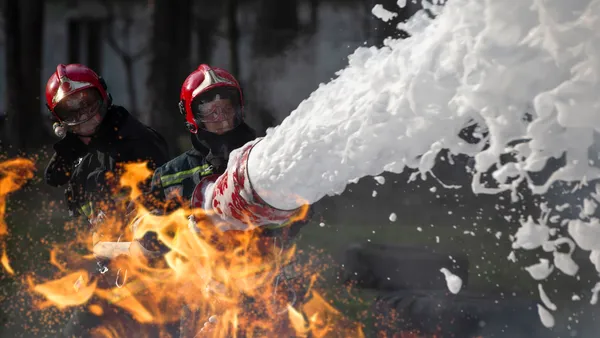Dive Brief:
- More than half of a large sample of landfills in the U.S. have detectable methane plumes, a study of more than 250 landfills across 18 states found. The study, conducted by satellite monitoring nonprofit Carbon Mapper and partner organizations, is "the largest airborne or ground-based survey of U.S. landfills to date," according to its authors.
- The emissions were charted via aerial surveys, and flyovers were repeated at the same landfills over the four-year study period. The study adds to the growing list of evidence that current modeling practices for landfill methane may underreport emissions.
- “It suggests that there is a misalignment” between the models that underpin governments' understanding of landfill gas emissions today and what their true emissions are, Dan Cusworth, Carbon Mapper program scientist and lead author on the paper, said in an interview.
Dive Insight:
Methane is considered a "superpollutant" because its warming power once emitted to the atmosphere is about 80 times stronger than carbon dioxide over a 20-year time span. The U.S. and dozens of other countries have identified methane emissions reduction as a key lever to meet near-term climate goals and prevent tipping points in the earth's climate system.
To achieve that goal, the Biden administration released a U.S. Methane Emissions Reduction Action Plan in 2021 and more recently issued an interagency strategy guide. The documents lay out steps regulators and industry players can take across major methane-emitting sectors to reduce emissions 30% by 2030, compared with 2020 levels.
The Biden administration has worked extensively with the oil and gas sector to address methane from drilling sites, finalizing a rule in December that the EPA said would "sharply reduce methane and other harmful air pollutants" from the sector.
But a chorus of environmental groups and lawmakers have called on the EPA to update its emissions standards for MSW landfills. They argue that new technologies like drones and satellites can do a better job of identifying methane leaks so parties can address them rather than let them persist undetected.
Landfills are currently estimated to be the third largest source of methane emissions in the U.S., according to the U.S. EPA's Inventory of Greenhouse Gas Emissions and Sinks. But that estimate is based on models that take a bottom-up approach to estimating landfill emissions, including studies on the decomposition of various waste streams and the efficiency of landfill gas collection systems.
The study determined a “a large discrepancy and generally poor correlation” between what scientists observed and how the U.S. Greenhouse Gas Reporting Program, which pulls together widely used estimates of emissions, models landfill methane emissions. The authors note that there could be “systematic issues with the models that underpin reporting programs.”
The Carbon Mapper study presents the case for more aggressively addressing methane plumes in landfills. Cusworth noted that the oil and gas sector overall most likely emits more methane and has more infrastructure in the U.S. But Carbon Mapper’s study found that 60% of the methane point sources identified in the study persisted for months or years, which is far more common than typical super-emitting events in the oil and gas sector.
Federal strategy is centered on addressing the highest-emitting point sources to get the biggest return on investment for emissions reductions. Through that lens, the comparatively smaller number of landfills emitting methane today offers a major methane reduction opportunity that so far has barely been measured, let alone contained, the study argues.
“If you just isolate those really persistent point sources that we see in the landfill sector, they kind of dominate all of landfill emissions,” Cusworth said. “If you really tackled those persistent point sources, you can realize a pretty significant reduction in methane emissions.”
The Carbon Mapper study picks up from an earlier look at waste facilities in California, conducted by the state in partnership with NASA's Jet Propulsion Laboratory. That study looked at more than 400 waste sites in the state and determined that 41% of the largest point sources of methane came from landfills. Methane can come from multiple sources at a landfill, including holes in the landfill cover or an open and active cell, where a recent EPA study determined far more methane is being emitted than was once assumed.
But the Carbon Mapper study noted that it sometimes detected point sources not just from the landfill cover, but also from a place where a gas collection system should ordinarily be working. In one case, the scientists measured a landfill in the Southern U.S. four times, and in each case they found that a flare which should have burned off excess emissions wasn't operating. As a result, that one malfunctioning point on a landfill was responsible for 322,000 megatons of carbon dioxide equivalent, or 11% of that state's total modeled methane emissions for the year.
"These could be things that are very hard to capture, if not nearly impossible to turn to data models to capture. But they still manifest as emissions and sometimes can be very significant emissions when you consider their contribution against other sources," Cusworth said.
The malfunctioning flare is evidence that "timely repairs could have significant impact" on reducing methane emissions, per the study. Cusworth said that in many cases, the technologies and processes that exist today could address these plumes when they're detected, but more regular and robust monitoring regimens must be adopted in order to catch emissions quickly. Even walking surveys to monitor emissions, where workers physically pace a landfill with a methane detection instrument to sniff out leaks, likely have a role to play in addressing methane emissions, he said.
He pointed out that while 52% of the landfills studied had point source emissions, the other 48% had no detectable point sources that surpassed the threshold Carbon Mapper surveyed, meaning their gas control practices were largely working as intended.
"I certainly am optimistic that there are solutions that exist today that can be implemented to mitigate this and to collect the gas," Cusworth said.















